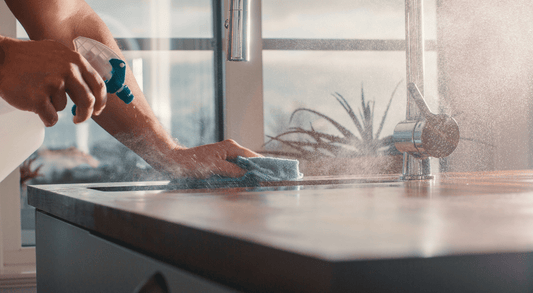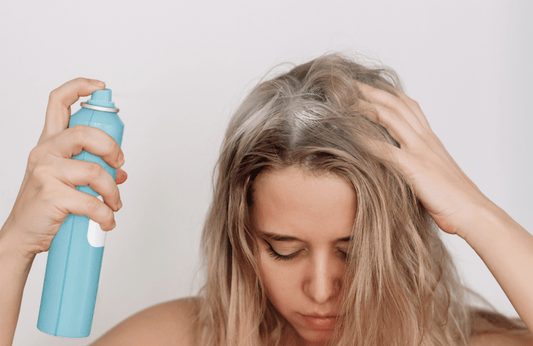No doubt you've heard of wheatgrass as a superfood. We've gulped down the wheatgrass shots (we're not fans!) in the quest for being extra healthy, but did you know that it also makes a fantastic soap with great benefits for your skin?
Read on to discover more with our wheatgrass soap recipe...
What is wheatgrass?
If you're lucky enough that the whole wheatgrass shots trend bypassed you then you might be wondering what on earth wheatgrass is?
It is the freshly sprouted first leaves of the common wheat plant and the trend for using it for health actually all started 5000 years ago, when the Egyptians discovered the health benefits of eating the leaves.
These days you'll often see it in health food shops or juice bars in fresh or powdered form where it is heralded for it's nutritional value.

What nutrients are in wheatgrass?
Wheatgrass holds so many nutrients - that's why it is so popular! It contains:
- iron
- calcium
- enzymes
- magnesium
- phytonutrients
- 17 amino acids
- vitamins A, C, E, K, and B complex
- chlorophyll
- proteins
People believe it can help with everything from your digestive system to eliminating toxins, boosting your immune system and your metabolism, lower cholesterol and more!
How does wheatgrass work in a soap?
Firstly, the wheatgrass powder makes a wonderful, 100% natural colourant for the soap! It gives it a lovely olive green colour that compliments the aromas from the essential oils.
Secondly, the nutrients of the wheatgrass bring their own benefits to your skin to keep it healthy and glowing. It also contains antioxidant, antibacterial and anti-inflammatory properties and is great for acne prone skin and reducing redness.
Let's have a go at our wheatgrass soap recipe...
Makes 9-10 bars of soap
Takes 1 hour making time and 4-6 weeks curing time

Equipment:
To make our wheatgrass soap recipe, you will need:
- Gloves
- Goggles
- Digital scales
- Digital thermometer
- Stick blender
- Soap mould or DIY alternative (You can also try our silicone soap moulds!)
- Silicone spatula
- Heatproof bowl
- Plastic measuring jugs, ideally 2x 1L and 1x 2L
Ingredients:
- Olive oil pomace 400g | 439ml
- Coconut oil 200g
- Cocoa butter 144g
- Castor oil 40g | 42ml
- Yellow beeswax 16g
- Water 240g
- Sodium hydroxide 110g
- Patchouli essential oil 14g
- Lemongrass essential oil 7g
- Ylang ylang essential oil 4g
- Wheatgrass powder 15g
Method:

1. Mix the sodium hydroxide solution
- Put your gloves and goggles on.
- Open the window, the fumes are unpleasant.
- Weigh the sodium hydroxide
- Weigh the water
- Add the sodium hydroxide to the water, not the other way around
- Mix well until combined. Careful, it will get hot!
- Leave to cool

2. Weigh and heat the oils
- Weigh the olive oil, cocoa butter, castor oil, beeswax and coconut oil into a heatproof bowl.
- Heat gently above a pan of boiling water, or using short bursts in the microwave.
- Stir regularly until completely melted.
- Once melted, leave to cool.
- In a separate jug weigh each essential oil.
- Weigh the wheatgrass powder in a separate container.

3. Test the temperatures
- Test the temperature of the sodium hydroxide solution. It should be between 25C and 40C.
- Leave it to cool if necessary, but don't reheat it if it's too cool.
- Test the temperature of the melted oils. They should be between 35C and 40C.
- Leave it to cool or reheat if necessary.
- Once the temperatures are correct, add the sodium hydroxide solution to the oil mixture.

4. Blend until trace
- Mix with the stick blender, and blend with short pulses.
- Watch for the soap batter starting to thicken.
- Test for trace by dripping soap batter on the surface of the mixture. If the drips sit on the surface before disappearing, your mixture has reached trace.
- Add the essential oil blend.
- Add the wheatgrass powder.
- Mix and blend a little until combined.

5. Pour into moulds
- Pour the soap mixture into moulds
- Tap the mould to get rid of air bubbles
- Leave on a flat surface for 48 hours before unmoulding

6. Leave to cure
- Unmould your soap
- Place bars with space in between
- Leave to cure for 4-6 weeks.
Continue Reading:
Now you've learned how to make homemade wheatgrass soap, why not continue reading?
- Love making your own soap but not a fan of wheatgrass? Why not try our floral Rose Soap Recipe
- You may have been told that eucalyptus oil will solve all your hair care needs, but will it work? Let’s look at the claims and evidence in our blog Eucalyptus Oil For Hair
- Looking for more soap recipes? Try our Cucumber & Mint Soap Recipe
Did you try our wheatgrass soap recipe? Let us know in the comments below!



